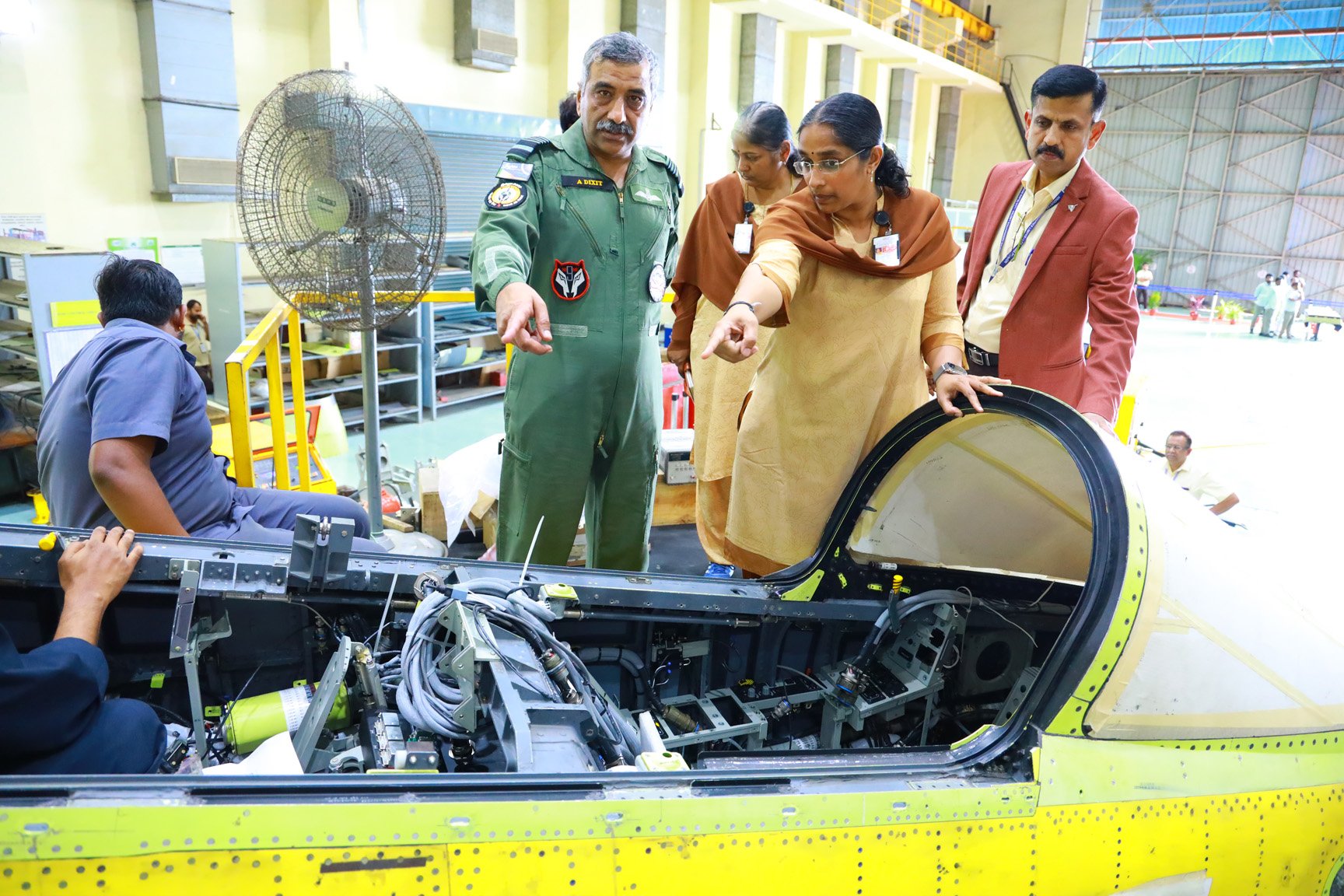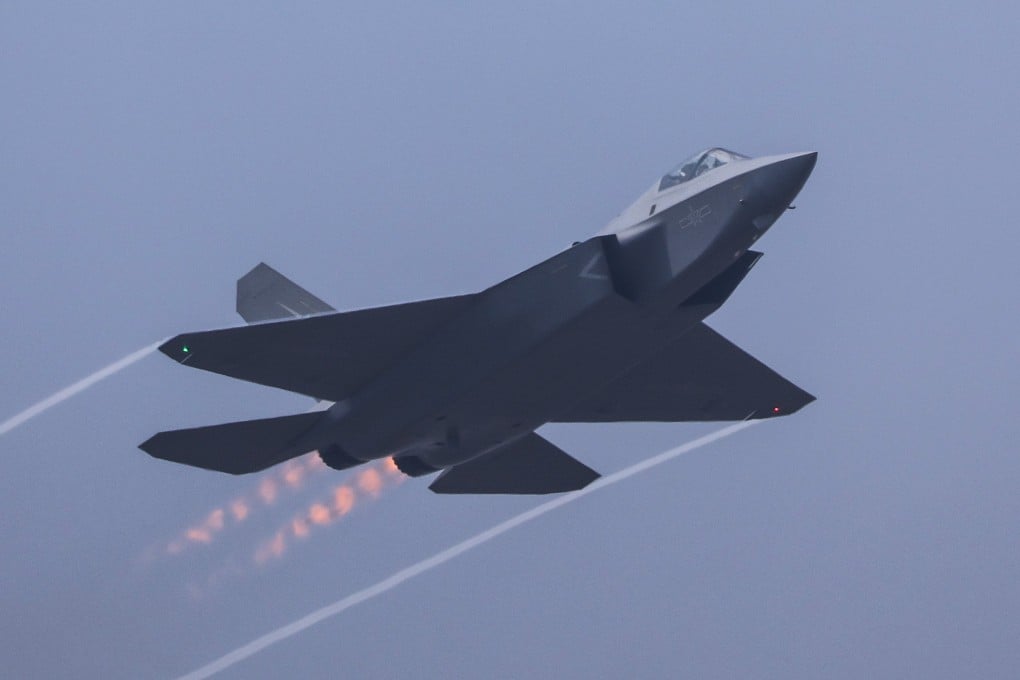SOURCE: ANI


A total of 76 terrorists, including 59 foreign militants from Hizbul Mujahideen (HM), Jaish-e-Mohammed (JeM), and Lashkar-e-Taiba (LeT), are currently active in Jammu and Kashmir, government sources said on Thursday.
The data shows a sharp decline in the number of active terrorists in Jammu and Kashmir, where a total of 91 terrorists were active in the corresponding period in 2024. Among the 76 active terrorists, 17 are local terrorists operating within the Union Territory– which has been hotspot for militancy and terrorism since the late 1980s, with insurgency fueled by Pakistan-based terror groups, cross-border infiltration, and radicalization efforts.
Continue readingSOURCE: RAUNAK KUNDE / NEWS BEAT / IDRW.ORG


At Aero India 2025, held in Bengaluru from February 10-14, the Aeronautical Development Agency (ADA), under India’s Defence Research and Development Organisation (DRDO), showcased a scaled model of the Archer-NG Medium Altitude Long Endurance (MALE) Unmanned Aerial Vehicle (UAV), integrated with the Astra Mk1 Beyond Visual Range Air-to-Air Missile (BVRAAM).
This display marked a significant milestone in India’s indigenous UAV development program, highlighting the country’s growing capabilities in unmanned systems. Building on this showcase, ADA has now revealed ambitious plans to develop a weaponized variant of the Archer-NG, equipped with an Active Electronically Scanned Array (AESA) radar, to expand its operational scope across air-to-air, air-to-ground, surveillance, and armed reconnaissance missions. According to details shared with idrw.org, this advanced variant promises to transform the Archer-NG into a multi-role platform with enhanced combat and intelligence-gathering capabilities.
Continue readingSOURCE: RAUNAK KUNDE / NEWS BEAT / IDRW.ORG


At the upcoming Aero India, Hindustan Aeronautics Limited (HAL) is set to showcase an innovative development in aerospace technology with the CATS OMCA (Combat Air Teaming System—Optionally Manned Combat Aircraft), based on the Kiran Mk2, now dubbed an Optionally Piloted Aircraft (OPA). This demonstration model hints at a broader strategy for the Indian Air Force (IAF) to repurpose its retired or soon-to-be-retired aircraft fleets.
The primary objective behind CATS OMCA is to evaluate its feasibility for integration into existing aircraft platforms. One of the major proposals being considered is its implementation in the Kiran MkII aircraft, which are set to retire by 2029. Additionally, there is an ambitious plan to incorporate this technology into stored MiG-27 aircraft, which have been retired but kept in reserve over the last few years.
Continue readingSOURCE: RAUNAK KUNDE / NEWS BEAT / IDRW.ORG


In a major milestone for India’s defence capabilities, the next-generation BrahMos missile, dubbed BrahMos NG, is on track for its first flight test in 2026, with production slated to commence between 2027 and 2028. Jaiteerth R Joshi, Director General of BrahMos Aerospace—a joint venture between India’s Defence Research and Development Organisation (DRDO) and Russia’s NPO Mashinostroyeniya—revealed these timelines during a recent interaction with the media.
The BrahMos NG, designed to be more compact and lightweight than its predecessor while retaining the same devastating capabilities, promises to enhance India’s strategic strike options across multiple platforms, signaling a new chapter in the evolution of one of the world’s most formidable supersonic cruise missiles.
Continue readingSOURCE: AFI


As India approaches the centennial of its independence in 2047, the Indian Air Force (IAF) has set an ambitious target of expanding its fighter aircraft fleet to 60 squadrons, a significant leap from its current strength. This goal, articulated by senior IAF officials during recent discussions on modernization and self-reliance, reflects the force’s determination to ensure air dominance and safeguard India’s sovereignty amidst evolving regional and global security challenges.
Achieving this target will require a concerted effort involving indigenous production, strategic acquisitions, and technological innovation, aligning with India’s broader vision of becoming a fully self-reliant defence power by 2047.
Continue readingSOURCE: AFI


In a significant push towards bolstering the Indian Air Force’s (IAF) indigenous fighter fleet and accelerating India’s self-reliance in defence manufacturing, the Ministry of Defence (MoD) has directed Hindustan Aeronautics Limited (HAL) to deliver 12 Light Combat Aircraft (LCA) Tejas in the calendar year 2025. Furthermore, the MoD has outlined an ambitious roadmap for HAL to scale up production to 20 Tejas aircraft annually starting from 2026 onwards. This directive underscores the government’s commitment to the “Make in India” initiative and aims to ensure that the IAF’s operational requirements are met through domestically developed platforms.
HAL has already delivered a limited number of Tejas aircraft to the IAF, with the first squadron, No. 45 “Flying Daggers,” inducted in 2016, followed by the second squadron, No. 18 “Flying Bullets,” in 2020. However, production rates have historically lagged behind the IAF’s expectations due to supply chain constraints, delays in certification, and the complexity of integrating advanced systems into the Mk-1A variant. The MoD’s new targets of 12 aircraft in 2025 and 20 annually thereafter signal a renewed focus on overcoming these bottlenecks and ramping up production to meet the IAF’s operational timelines.
Continue readingSOURCE: AFI


Recent images circulating on defense forums and social media platforms have revealed that the Armenian Spetsnaz, the elite special operations forces of Armenia, have been equipped with the advanced Spartan-S thermal monoculars developed by Tonbo Imaging, a Bengaluru-based Indian defense technology firm. This development marks a significant milestone in India’s growing role as a supplier of cutting-edge defense equipment to international partners, while also highlighting Armenia’s efforts to modernize its special forces with state-of-the-art technology.
The Spartan-S, described by Tonbo Imaging as the “next generation of CLIPON Thermal Weapon Sight,” is a versatile and lightweight thermal imaging system designed to meet the demanding needs of modern warfare. Weighing under 300 grams, this compact device is engineered for ease of use without compromising on performance, making it an ideal choice for elite units like the Armenian Spetsnaz.
Continue readingSOURCE: AFI


In a strategic move that underscores a shift in Middle Eastern defence procurement, Saudi Arabia has turned its back on China’s much-touted J-35 stealth fighter jet. This decision was dramatically highlighted at the G20 Summit in mid-November, just as Beijing was celebrating its supposed advancements in aerospace at the Jew High Air Show.
Despite Beijing’s bold claims of interest from wealthy Middle Eastern buyers, the G20 summit revealed a different story. The UK, Italy, and Japan engaged with Saudi Arabia to discuss its inclusion in a collaborative sixth-generation fighter jet project, effectively sealing a deal expected to be finalized by year’s end. This development not only undermines China’s narrative of dominance in the global arms market but also casts doubt on the credibility of its military technology, particularly the J-35.
Continue readingSOURCE: PTI


India’s indigenously-built Tejas light combat aircraft on Wednesday successfully test fired homegrown air-to-air missile Astra. The test firing of the missile was carried out off the coast of Chandipur in Odisha, according to the defence ministry.
“The test-firing successfully demonstrated the direct hit of the missile on flying target,” it said. “All the subsystems performed accurately meeting all mission parameters and objectives,” the ministry said.
Continue readingSOURCE: PTI


The defence ministry on Wednesday signed a Rs 2,906 crore contract with state-run Bharat Electronics Ltd (BEL) for procurement of transportable radar (Ashwini) for the Indian Air Force.
The radar has been indigenously designed and developed by Electronics and Radar Development Establishment of the Defence Research and Development Organisation (DRDO). It is capable of tracking aerial targets from high-speed fighter aircraft to slow moving targets such as unmanned aerial vehicles and helicopters.
Continue readingSOURCE: IANS


US Vice President J.D. Vance and his Indian-descent wife Usha Vance will visit India later this month, according to a US news report. This makes him the second member of the President Donald Trump Cabinet headed for New Delhi this month, along with Tulsi Gabbard, the director of national intelligence.
According to a US media outlet, the Vice President will be accompanied by the second lady, whose parents immigrated to the US from India. She was born and raised in the US and met Vance at Yale, where they were both studying law.
Continue readingSOURCE: IANS


With a twin-objective — to underscore India as a more hospitable destination for global visitors and to tackle modern-day security challenges — the Central government has introduced the Immigration and Foreigners Bill of 2025. A seminal piece of legislation, the Bill is designed to reform and streamline the nation’s immigration framework.
This forward-thinking measure of Prime Minister Narendra Modi-led Central government, seeks to fortify national security while fostering economic prosperity and ensuring effortless access for legitimate foreign visitors; be they professionals, scholars, business magnates, tourists, or those in quest of medical care.
Continue readingSOURCE: PTI
)

Twenty-one passengers and four paramilitary soldiers were killed by militants holding hostages after seizing control of a train in Balochistan, an army general said on Wednesday. Army spokesman Lt Gen Ahmad Sharif told Dunya News TV that security forces killed all 33 militants present at the scene. “The armed forces successfully concluded the operation in the (Wednesday) evening by killing all terrorists and rescuing all passengers safely, Lt Gen Sharif said.
He said that 21 passengers were killed by the terrorists when they attacked the train on Tuesday. He added that four paramilitary Frontier Corps soldiers were also killed in the incident.
Continue readingSOURCE: PTI


Railways Minister Ashwini Vaishnaw on Wednesday welcomed Elon Musk’s Starlink to India and said it will help railway projects in remote areas of the country. “Starlink, welcome to India! Will be useful for remote area railway projects,” Vaishnaw posted on social media platform X. Vaishnaw is also the minister for information and broadcasting, as well as electronics and information technology.
His comments follow two separate deals with Mukesh Ambani’s Jio Platforms and Sunil Mittal’s Bharti Airtel struck by SpaceX, the aerospace company led by Musk, to bring Starlink’s broadband internet services to India.
Continue readingSOURCE: IANS


A Mizoram social activist urged Union Home Minister Amit Shah to take urgent action on illegal entry of Myanmar refugees into the state, rising crime rate, smuggling of explosives and drugs, and fake documentation in the northeastern state.
After a military coup in Myanmar in February 2021, refugees including women and children from the neighbouring country started coming to Mizoram seeking shelter and now their numbers have increased to around 35,000.
Continue reading